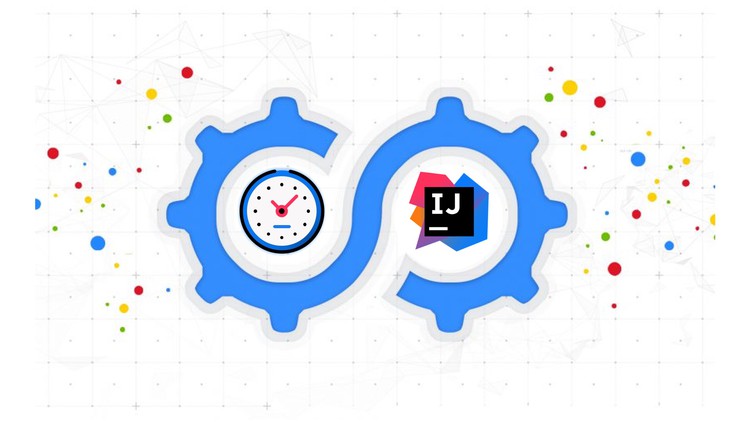
What you will learn
How to use IntelliJ IDEA to its maximum capacity
How to Configure IntelliJ IDEA to Keep Us in the Flow State
Hands-On examples for Smart Code Completion, Complete Current Statement, CamelCase Completion, Postfix Completion, etc.
How to create everything from within the code editor with the least friction
Hands-On examples with File Templates and Live Templates for boilerplate code
Extended example of how to refactor a Java application using IntelliJ IDEA
How to make use of the IntelliJ tools for Database support
How to make use of the IntelliJ tools for Maven support
Description
IntelliJ IDEA is built on the principle that every minute a developer spends in the flow state is a good minute, and things that break developers out of that flow are bad and should be avoided.
This course is built with ergonomic ideas in mind, to help you make the most out of an IDE.
We’re going to explore what are the features that actually make us more productive.
Curriculum:
How to Configure IntelliJ IDEA to Keep You in the Flow State
- How to Configure IntelliJ with ergonomics in mind
- How to Setup IntelliJ in order to navigate faster
- How to use all IntelliJ many tools without breaking our focus.
- How to make IntelliJ move fast to not disturb your creative flow
- Find useful features that you actually never used
Making Use of Code Completion
- Real-life use cases for Complete Current Statement
- Real-life use cases for Smart Completion
- Real-life use cases for CamelCase Completion
- Real-life use cases for Postfix Completion
How to Avoid Common Interruptions in Daily Coding
- How to avoid going back to fix already-typed expression
- How to create everything from within the code editor with the least friction
IntelliJ IDEA Templates for Spring Boot Application
- How to generate boilerplate code for common SpringBoot application
- How to use and create Live and File Templates
Refactoring in IntelliJ IDEA
- How IntelliJ facilitates the process of refactoring
- Explore automatic refactoring capabilities of IntelliJ
- Hands-on refactoring examples and how IntelliJ helps to reduce mistakes while changing the code
Database Tools
- How we can use IntelliJ IDEA to connect to a PostgreSQL database
- How to make use of the IntelliJ support for Spring Data
- Generate diagrams of the database schema
- Manage code entities
- Run queries from the codebase
Maven Tools
- Why do we need Maven for development?
- How IntelliJ IDEA makes the interaction with maven effortless and intuitive, but also more effective?
- Getting started with a Maven project in IntelliJ Idea.
- Explore IntelliJ features for the POM file.
- Understanding the Maven Build Lifecycle.
- How to create and save custom run configurations?
- Why download sources and documentation?
- How to use the visual representation of all dependencies?
Debugging Features
- How to use Conditional Breakpoints?
- Explore different types of breakpoints.
- How to use the Stream Debugger?
- Modify Code Behaviour while debugging.
English
language
Content
Introduction
IntelliJ IDEA Philosophy
IntelliJ IDEA Philosophy
The Usual look of IntelliJ IDEA
Better alternatives to tabs
Better alternatives to tabs
The “too many tool windows” problem
The “too many tool windows” problem
The navigation bar
Zen workspace
Zen workspace
Snappy projects
Snappy projects
Tip of the day
Tip of the day
Making Use of Code Completion
Code Completion in Real Life – Example 1
Code Completion Hands-on Example 1
Code Completion Hands-on Example 1
Code Completion in Real Life – Example 2
Code Completion Hands-on Example 2
Code Completion in Real Life – Example 2
Summary
How to Avoid Common Interruptions in Daily Coding
Making use of Postfix completion. Use Cases.
Making use of Postfix completion. Use Cases.
Create anything without leaving the current code
Create anything without leaving the current code
IntelliJ IDEA Templates for Spring Boot Application
Example Project Presentation
Example Project Presentation
Making use of Entity Templates
Making use of Entity Templates
Making use of Repository Templates
Making use of Repository Templates
Making use of Controller Templates
Making use of Controller Templates
Refactoring in IntelliJ IDEA
Why refactor? Motivation for Refactoring in general.
Why refactor? Motivation for Refactoring in general.
The first step in refactoring
The first step in refactoring
Adding structure to the code using IntelliJ Refactoring Tools
Adding structure to the code using IntelliJ Refactoring Tools
Post Refactoring Steps
Post Refactoring Steps
Adding more structure to the code using IntelliJ Refactoring Tools
Adding more structure to the code using IntelliJ Refactoring Tools
Splitting the structured code
Splitting the structured code
Replace Conditional with Polymorphism
Replace Conditional with Polymorphism
Recap
Database Tools
Introduction
Creating a JPA Project and connecting it to a Datasource
Creating a JPA Project and connecting it to a Datasource
Making use of IntelliJ support for Database Entities
Making use of IntelliJ support for Database Entities
Making use of IntelliJ support for Database Repositories
Making use of IntelliJ support for Database Repositories
Database Performance Tools
Database Navigation and Refactoring
Database Navigation and Refactoring
Maven Tools
Purpose of Maven
Create a new Maven project
IntelliJ features for the POM file
Maven Build Lifecycle Tools
Maven Build Lifecycle Tools
Creating and saving custom run configurations
Download sources and documentation
Download sources and documentation
Assigning shortcuts to your tool windows
Visual representation of all dependencies
Debugging Features
Introduction
Use Conditional Breakpoints
Log the Breakpoint
Breakpoint of type Exception
Use Field Watchpoints
Use the Stream Debugger
Modify Code Behaviour